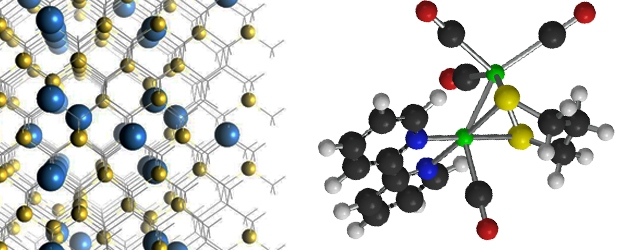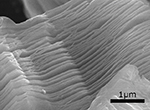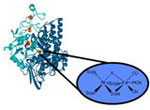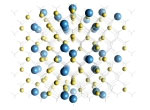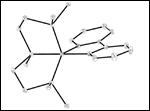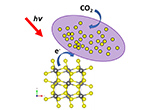Inorganic Chemistry
ASU students design and synthesize inorganic and organometallic complexes for energy and sustainability challenges inspired by biology or based on fundamental understanding of molecular structure and function, they make novel hard-to-soft matter interfaces, synthesize novel 2-dimensional materials, and combine inorganic chemistry, applied physics and materials science to design and prepare novel solid state and molecular materials for electronic applications.
Inorganic solid-state chemistry, materials chemistry, non-conventional synthesis methods, microwave chemistry, inorganic solids, structure of solids, X-ray diffraction, two-dimensional materials, hybrid materials, surface chemistry, magnetism, catalysis
Cosmochemistry, Geochemistry, High Pressure Chemistry, Meteoritics, Planetary and Exoplanetary Science, Astrophysics
Bioinorganic chemistry, electrochemistry, hydrogenases, de novo protein design and engineering, redox enzyme mechanisms, alternative energy generation
Solid-State Chemistry, Quantum Materials, Inorganic Chemistry, Materials Science
Solid-state inorganic chemistry, thin film heterostructures, nanoscale devices, microelectronics
Organic chemistry, materials chemistry, solar energy transduction, photocatalysis, molecular electronics, chemical sensing, proton coupled electron transfer
Inorganic solids, sustainable materials chemistry, porous materials, hierarchical nanostructures, hybrid materials, exploration of new synthetic methods, energy production, water purification, environmental remediations
Organometallic and Inorganic Chemistry, Homogeneous Catalysis, Small Molecule Activation, Green Chemistry, Reaction Mechanisms, Organic Synthesis
Microbe-Nanostructure Interactions, Biogenic Nanomaterials, Amorphous Nanomaterials, Materials Crystal Structure and Catalysis, Anoxygenic Photosynthesis, Sulfur Bacteria, Sulfate-Reducing Bacteria, Biogeochemistry, and Astrobiology
Experimental quantum biosensing; biophysics and protein sciences; diamond material; NMR; microscopy
